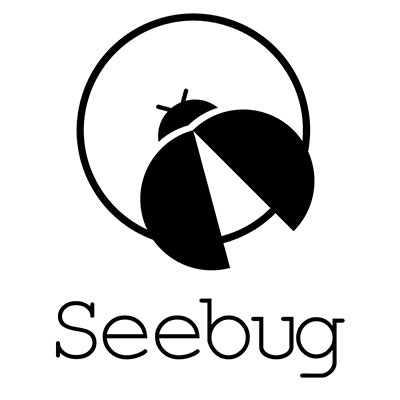# ICS Advisory (ICSA-19-099-04)
## Siemens SINEMA Remote Connect
Original release date: April 09, 2019
[Print Document](javascript:window.print\(\);)
[Tweet](https://twitter.com/share?url=https%3A%2F%2Fus-
cert.cisa.gov%2Fics%2Fadvisories%2FICSA-19-099-04)
[Like Me](https://www.facebook.com/sharer.php?u=https%3A%2F%2Fus-
cert.cisa.gov%2Fics%2Fadvisories%2FICSA-19-099-04)
[Share](http://www.addthis.com/bookmark.php?url=https%3A%2F%2Fus-
cert.cisa.gov%2Fics%2Fadvisories%2FICSA-19-099-04)
### Legal Notice
All information products included in [https://us-cert.gov/ics](/ics) are
provided "as is" for informational purposes only. The Department of Homeland
Security (DHS) does not provide any warranties of any kind regarding any
information contained within. DHS does not endorse any commercial product or
service, referenced in this product or otherwise. Further dissemination of
this product is governed by the Traffic Light Protocol (TLP) marking in the
header. For more information about TLP, see [https://www.us-
cert.gov/tlp/](/tlp/).
* * *
## 1\. EXECUTIVE SUMMARY
* **CVSS v3 8.3**
* **ATTENTION:** Exploitable remotely/low skill level to exploit
* **Vendor:** Siemens
* **Equipment:** SINEMA Remote Connect (Client and Server)
* **Vulnerabilities:** Incorrect Calculation of Buffer Size, Out-of-bounds Read, Stack-based Buffer Overflow, Improper Handling of Insufficient Permissions
## 2\. RISK EVALUATION
Successful exploitation of these vulnerabilities could allow an attacker to
circumvent the system authorization for certain functionalities, and to
execute privileged functions.
## 3\. TECHNICAL DETAILS
### 3.1 AFFECTED PRODUCTS
The following Siemens products are affected:
* SINEMA Remote Connect Client; all versions prior to v2.0 HF1
* SINEMA Remote Connect Server; all versions prior to v2.0
Note that not every product listed above is affected by every vulnerability
described below. Please see the Siemens advisory for more detail.
### 3.2 VULNERABILITY OVERVIEW
**3.2.1 [INCORRECT CALCULATION OF BUFFER SIZE
CWE-131](https://cwe.mitre.org/data/definitions/131.html)**
The HTTP client curl is vulnerable to a buffer overrun.
The vulnerability could be exploited by an attacker providing a malicious HTTP
server. Successful exploitation requires no system privileges. User
interaction by a legitimate use is required to exploit the vulnerability. An
attacker could use the vulnerability to compromise confidentiality, integrity
and availability of the affected device.
[CVE-2018-14618](http://web.nvd.nist.gov/view/vuln/detail?vulnId=CVE-2018-14618)
has been assigned to this vulnerability. A CVSS v3 base score of 7.5 has been
calculated; the CVSS vector string is
([AV:N/AC:H/PR:N/UI:R/S:U/C:H/I:H/A:H](https://www.first.org/cvss/calculator/3.0#CVSS:3.0/AV:N/AC:L/PR:N/UI:N/S:U/C:N/I:N/A:H))
**3.2.2 [OUT-OF-BOUNDS READ
CWE-125](https://cwe.mitre.org/data/definitions/125.html)**
The HTTP client library libcurl is vulnerable to a heap buffer out-of-bounds
read.
The vulnerability could be exploited by an attacker providing a malicious HTTP
server. Successful exploitation requires no system privileges and no user
interaction. An attacker could use the vulnerability to compromise
availability of the affected system.
[CVE-2018-16890](http://web.nvd.nist.gov/view/vuln/detail?vulnId=CVE-2018-16890)
has been assigned to this vulnerability. A CVSS v3 base score of 7.5 has been
calculated; the CVSS vector string is
([AV:N/AC:L/PR:N/UI:N/S:U/C:N/I:N/A:H](https://www.first.org/cvss/calculator/3.0#CVSS:3.0/AV:N/AC:L/PR:N/UI:N/S:U/C:N/I:N/A:H)).
**3.2.3 [STACK-BASED BUFFER OVERFLOW
CWE-121](https://cwe.mitre.org/data/definitions/121.html)**
The HTTP client library libcurl is vulnerable to a stack-based buffer
overflow.
The vulnerability could be exploited by an attacker providing a malicious HTTP
server. Successful exploitation requires no system privileges and no user
interaction. An attacker could use the vulnerability to compromise
confidentiality, integrity and availability of the affected system.
[CVE-2019-3822](http://web.nvd.nist.gov/view/vuln/detail?vulnId=CVE-2019-3822)
has been assigned to this vulnerability. A CVSS v3 base score of 8.1 has been
calculated; the CVSS vector string is
([AV:N/AC:H/PR:N/UI:N/S:U/C:H/I:H/A:H](https://www.first.org/cvss/calculator/3.0#CVSS:3.0/AV:N/AC:H/PR:N/UI:N/S:U/C:H/I:H/A:H)).
**3.2.4 [IMPROPER HANDLING OF INSUFFICIENT PERMISSIONS
CWE-280](https://cwe.mitre.org/data/definitions/280.html)**
Due to insufficient checking of user permissions, an attacker may access URLs
that require special authorization.
The vulnerability could be exploited by an attacker with network access to the
affected system. An attacker must have access to a low privileged account to
exploit the vulnerability. An attacker could use the vulnerability to
compromise confidentiality, integrity and availability of the affected system.
[CVE-2019-6570](http://web.nvd.nist.gov/view/vuln/detail?vulnId=CVE-2019-6570)
has been assigned to this vulnerability. A CVSS v3 base score of 8.3 has been
calculated; the CVSS vector string is
([AV:N/AC:L/PR:L/UI:N/S:U/C:L/I:H/A:H](https://www.first.org/cvss/calculator/3.0#CVSS:3.0/AV:N/AC:L/PR:L/UI:N/S:U/C:L/I:H/A:H)).
### 3.3 BACKGROUND
* **CRITICAL INFRASTRUCTURE SECTORS:** Agriculture and Food; Chemical; Critical Manufacturing; Energy; Water/Wastewater
* **COUNTRIES/AREAS DEPLOYED:** Worldwide
* **COMPANY HEADQUARTERS LOCATION:** Germany
### 3.4 RESEARCHER
Siemens ProductCERT reported these vulnerabilities to NCCIC.
## 4\. MITIGATIONS
Siemens currently has updates for the following products:
* SINEMA Remote Connect Client: Update to v2.0 HF1: <https://support.industry.siemens.com/cs/de/en/view/109764829>
* SINEMA Remote Connect Server: Update to v2.0: <https://support.industry.siemens.com/cs/de/en/view/109764829>
Siemens recommends users apply the following specific workarounds and
mitigations to reduce the risk.
* Turn off NTLM authentication to mitigate CVE-2018-16890 and CVE-2019-3822.
* Turn off SMTP to mitigate CVE-2019-3822.
* Apply defense-in-depth strategies.
Siemens recommends users configure their environment according to Siemens'
operational guidelines for Industrial Security
([Download](https://assets.new.siemens.com/siemens/assets/public.1502968141.411e91564a2d259ecd4b6c79b51f89c044b3de81.operational-
guidelines-industrial-security-en.pdf)) and follow the recommendations in the
product manuals.
Additional information on Industrial Security by Siemens can be found at:
<https://www.siemens.com/industrialsecurity>
For more information on these vulnerabilities and more detailed mitigation
instructions, please see Siemens Security Advisory SSA-436177 at the following
location:
<https://cert-portal.siemens.com/productcert/pdf/ssa-436177.pdf>
For further inquiries on security vulnerabilities in Siemens products and
solutions, please contact the Siemens ProductCERT:
<http://www.siemens.com/cert/advisories>
NCCIC recommends users take defensive measures to minimize the risk of
exploitation of this vulnerability. Specifically, users should:
* Minimize network exposure for all control system devices and/or systems, and ensure that they are [not accessible from the Internet](/ics/alerts/ICS-ALERT-10-301-01).
* Locate control system networks and remote devices behind firewalls, and isolate them from the business network.
* When remote access is required, use secure methods, such as Virtual Private Networks (VPNs), recognizing that VPNs may have vulnerabilities and should be updated to the most current version available. Also recognize that VPN is only as secure as the connected devices.
NCCIC reminds organizations to perform proper impact analysis and risk
assessment prior to deploying defensive measures.
NCCIC also provides a section for [control systems security recommended
practices](/ics/content/recommended-practices) on the ICS-CERT web page.
Several recommended practices are available for reading and download,
including [Improving Industrial Control Systems Cybersecurity with Defense-in-
Depth Strategies](/sites/default/files/recommended_practices/NCCIC_ICS-
CERT_Defense_in_Depth_2016_S508C.pdf).
Additional mitigation guidance and recommended practices are publicly
available on the [ICS-CERT website](/ics/) in the Technical Information Paper,
[ICS-TIP-12-146-01B--Targeted Cyber Intrusion Detection and Mitigation
Strategies](/ics/tips/ICS-TIP-12-146-01B).
Organizations observing any suspected malicious activity should follow their
established internal procedures and report their findings to NCCIC for
tracking and correlation against other incidents.
No known public exploits specifically target these vulnerabilities.


暂无评论